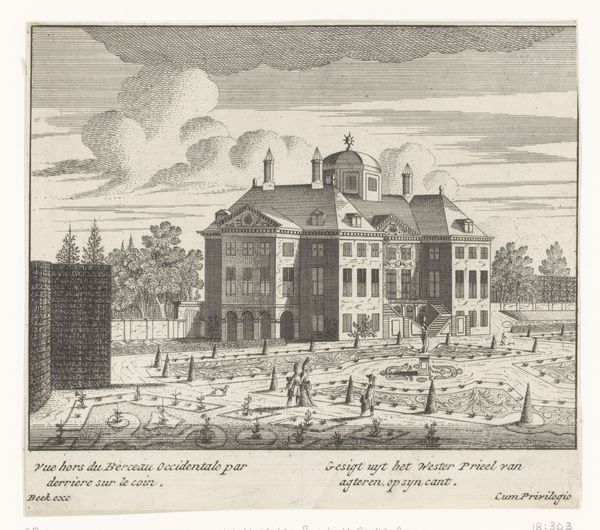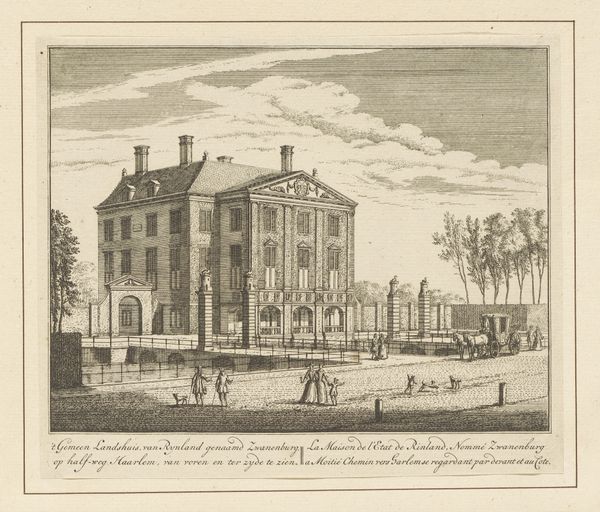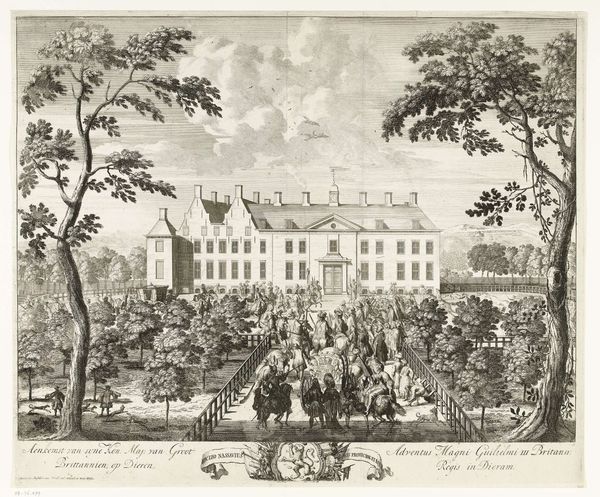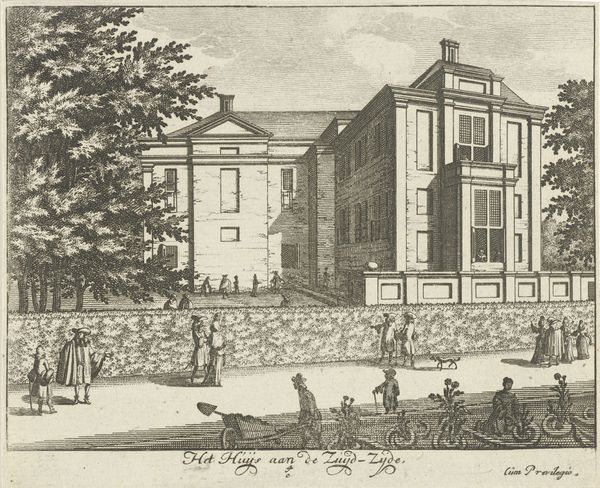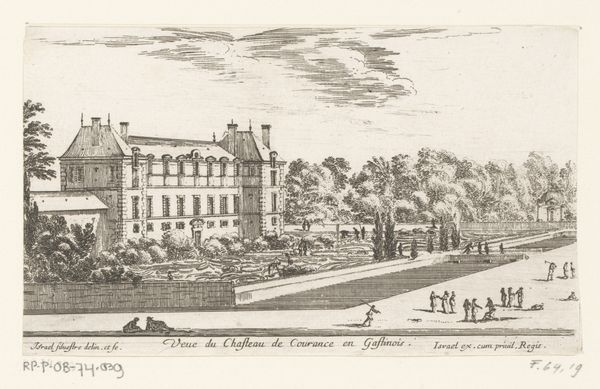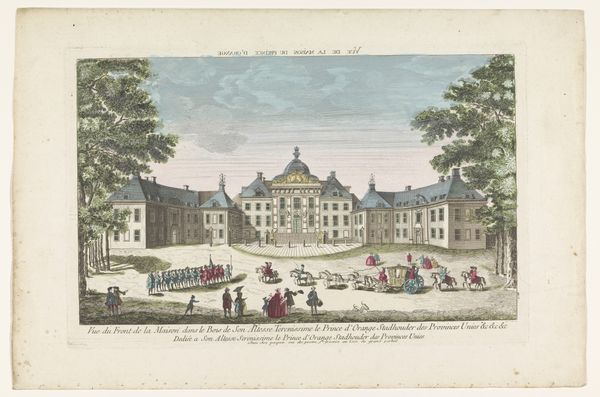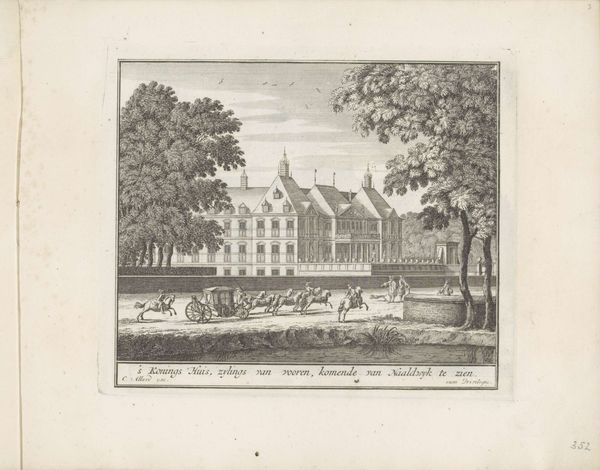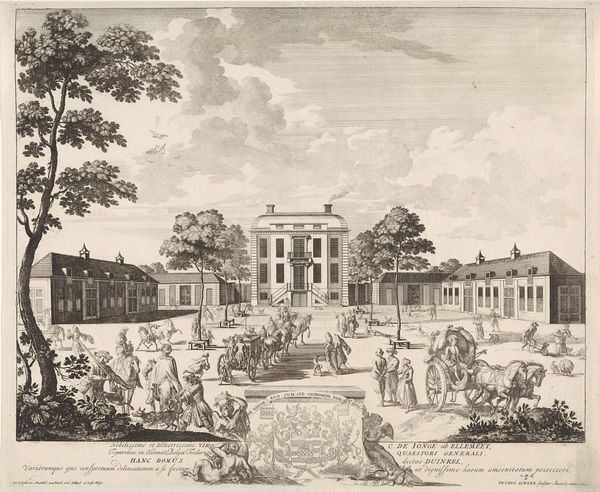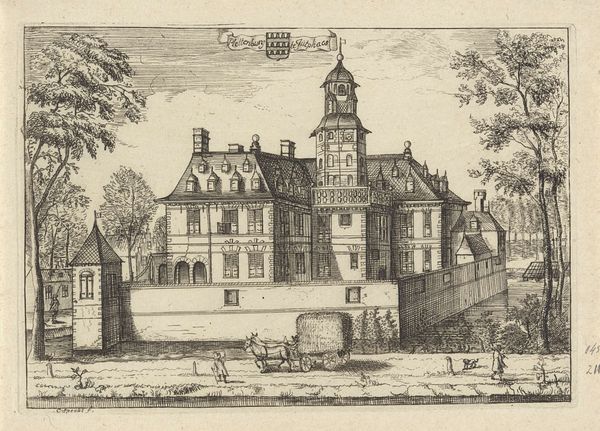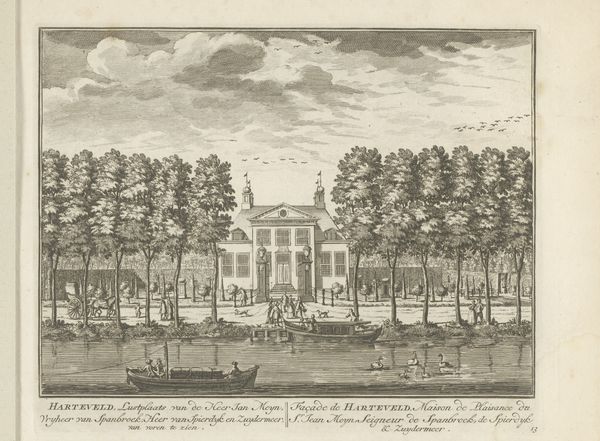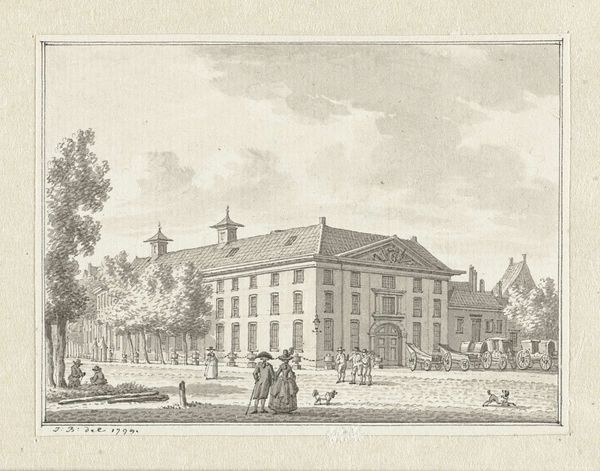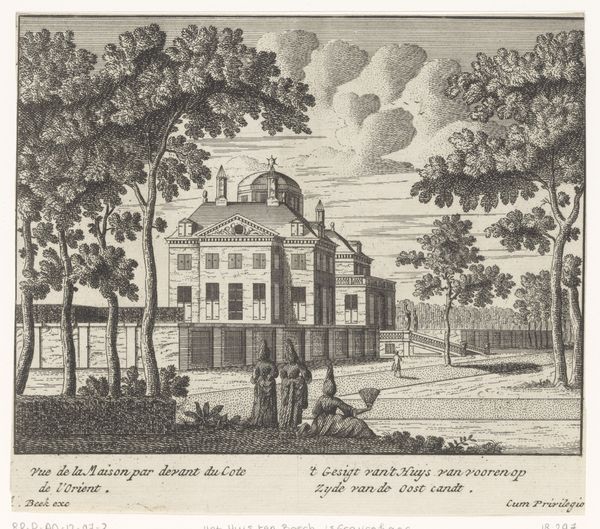
print, etching, engraving, architecture
#
aged paper
#
quirky sketch
#
baroque
#
mechanical pen drawing
# print
#
pen sketch
#
etching
#
old engraving style
#
sketch book
#
landscape
#
personal sketchbook
#
sketchwork
#
pen-ink sketch
#
pen work
#
engraving
#
architecture
Dimensions: height 131 mm, width 160 mm
Copyright: Rijks Museum: Open Domain
Hendrik de Leth’s delicate lines etch the rear facade of Soestdijk Palace. The statue in the garden becomes an emblem of classical ideals, a figure resurrected from antiquity. Statues like this, with their roots in ancient Greece and Rome, signify more than mere representation; they embody a continuity of cultural values. From the Venus of antiquity to the Renaissance nudes, the statue transmits concepts of beauty, heroism, and philosophical reflection. Consider how the formal garden mirrors these values, with its symmetrical order reflecting a desire to control nature, aligning it with human reason and aesthetics. Yet, this classical imagery undergoes continuous adaptation. The Renaissance rediscovers it, and later, the Enlightenment embraces it, each era imbuing it with new layers of meaning. The statue isn't static but rather a dynamic carrier of collective memory, a symbol continually reinterpreted to fit contemporary ideals. In this print, the classical statue is both a revival and a reinterpretation, a silent dialogue between past grandeur and present aspirations.
Comments
No comments
Be the first to comment and join the conversation on the ultimate creative platform.

